
Germany - 1938

 |
DKE 38B - Deutscher
Kleinempfänger Germany - 1938 |
 |
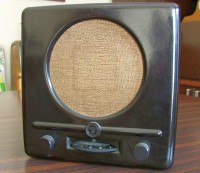 |
Italiano |
||
|
|
|||
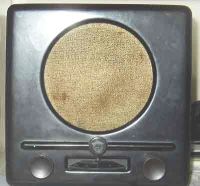 |
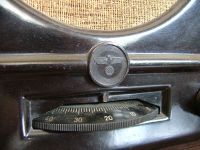 |
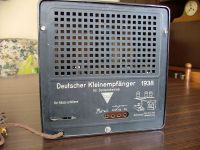 |
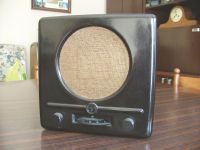 |
|
Questo modello del Deutscher Klein Empfangër (DKE - "Piccolo Ricevitore Tedesco") fu progettato e costruito dalla RFW di Berlino con alimentazione a batterie (Batteriebetrieb) per poter essere utilizzato nelle zone sprovviste di energia elettrica. Come per la DKE con alimentazione tramite rete, per la ricezione delle trasmissioni radio era necessario collegare alla radio una lunga antenna filare esterna. Anche per la DKE 38B il circuito era del tipo a reazione e riceveva le Onde Lunghe e le Onde Medie (da 800 a 2000 m e da 200 a 600 m) ma impiegava tre valvole con il filamento a 2 Volt: due triodi KC1 ed un pentodo KL1. Le batterie impiegate erano due, un accumulatore da 2 V per i filamenti, e una batteria a secco da 90 V per l'anodica. La batteria anodica disponeva anche di una presa a 6 V che veniva collegata a massa così nel polo negativo si veniva a creare la tensione negativa di -6V utilizzata per la polarizzazione di griglia del pentodo KL1. L'altoparlante era sempre fatto di cartone pressato ed era del tipo a spillo ad alta impedenza, mentre il mobiletto era in bakelite come nella DKE alimentata con la rete elettrica. Le dimensioni erano: 24 x 24 x 12 cm e il peso di era 1.6 kg senza batterie. © IK3HIA, 1998 - 2025. |
|||
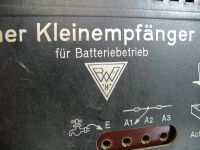 |
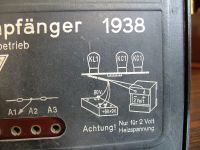 |
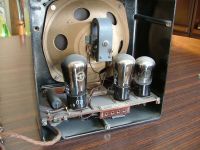 |
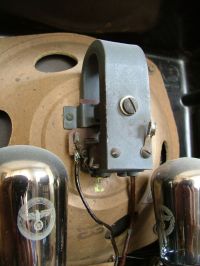 |
This model of the Deutscher Klein Empfangër (DKE - "Small German Receiver") was designed and built by the RFW of Berlin with battery power (Batteriebetrieb) to be used in areas without electricity. As for the mains powered model, to receive radio transmissions it was necessary to connect a long external wire antenna to the radio. The DKE 38B also had a reaction circuit, received Long Waves and Medium Waves (800 to 2000 m and 200 to 600 m), but it used three valves with a 2 Volt filament: two KC1 triodes and a KL1 pentode. Two batteries were used, a 2 V accumulator for the filaments, and a 90 V dry battery for the anode. The anode battery also had a 6 V outlet that was connected to ground so that the negative pole created the negative voltage of -6 V used for the grid polarization of the pentode KL1. The speaker was always made of pressed cardboard and was of the high impedance pin type, while the cabinet was made of bakelite as in the net powered DKE. The dimensions were: 9.4 x 9.4 x 4.7 inch and the weight was 3 lb 8.4 oz without batteries. © IK3HIA, 1998 - 2025. |
|||
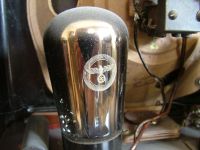 |
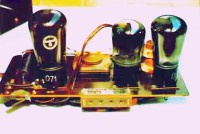 |
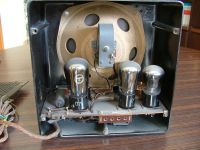 |
 |
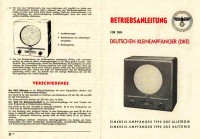 |
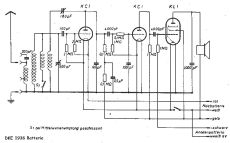 |
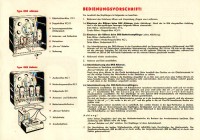 |
|
|
Return to top of page
|
|||
| Return to: Vecchie Radio | Back to: Volksradioempfängeren page |